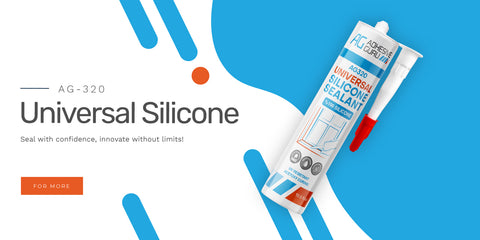The Essential Guide to Silicone Sealant: What You Need to Know
Silicone sealant, a powerful adhesive and sealing agent, has become an integral part of numerous applications from domestic fixes to massive industrial projects. Its impressive properties make it a prime choice, but what exactly is silicone sealant, and why has it gained such popularity?
History of Silicone Sealants
Diving deep into history, one can trace the inception of silicone sealants back to the mid-20th century. Their versatility and unique attributes quickly caught the attention of various industries.
-
Early Uses & Evolution
Initially, these sealants were primarily utilized for sealing gaps in aircraft and vehicles, offering resistance against extreme temperatures. As technology progressed, so did the uses of silicone sealants, expanding their realm from mere vehicles to household applications and more.
Types of Silicone Sealants
There are a plethora of silicone sealants available in the market today, each tailored for a specific purpose.
-
General Purpose
Ideal for most basic tasks, from sealing windows to filling gaps in walls.
-
Structural
These are robust and are primarily used for heavy-duty applications like bonding glass or metal surfaces.
-
Sanitary
Specifically designed for wet areas, they prevent mold and mildew growth.
Benefits of Using Silicone Sealants
-
Durability
One of the prime reasons for its widespread use, silicone sealants are renowned for their longevity.
-
Flexibility
They can stretch without tearing, accommodating the natural movement of structures.
-
Weather Resistance
Come rain, sun, or snow, silicone sealants hold their ground.

How Silicone Sealants Work
At the molecular level, silicone sealants showcase a unique chemical composition that grants them their iconic traits.
-
Chemical Composition & Bonding Mechanism
Comprising silicon, carbon, hydrogen, and oxygen, these sealants bond with surfaces by forming strong chemical bonds, ensuring an air and water-tight seal.
Common Applications
-
Home
From sealing bathroom tiles to fixing leaks, its uses are innumerable.
-
Automotive
They play a vital role in ensuring our vehicles remain watertight.
-
Industrial
In massive machinery or skyscrapers, silicone sealants hold things together.

Precautions & Safety Tips
-
Proper Storage & Handling
Ensure the sealants are kept away from children and stored in a cool, dry place.
The Essential Guide to Silicone Sealant: What You Need to Know
This pivotal section dives into the intricacies of silicone sealant, unraveling its mysteries and offering a comprehensive understanding.
Step-by-Step Guide to Applying Silicone
-
Preparation
Clean the surface thoroughly, removing any debris or old sealant.
-
Application
Cut the nozzle at an angle, apply steadily, and smooth with a spatula.
-
Curing
Let it set. The curing time might vary based on the product.
Mistakes to Avoid
-
Incorrect Surface Preparation
A dusty or wet surface won't hold the sealant well.
-
Overapplication
More doesn't always mean better. Avoid bulging by applying just the right amount.
Tools Needed for Silicone Sealant Application
-
Caulking Guns
For a steady application.
-
Spatulas
To smooth out the applied sealant.
-
Cleaners
For preparing the surface.
Tips for Prolonging Sealant Life
-
Regular Inspection & Maintenance
A little care can ensure the sealant lasts for years.
Silicone vs. Other Sealants
When compared to its counterparts, silicone often emerges as the top choice due to its unmatched properties.
Removal & Replacement
-
Techniques & Best Practices
Use a sharp blade for removal and ensure the surface is pristine before re-application.
Environmental Impact
-
Biodegradability & Sustainability
While silicone isn't biodegradable, efforts are underway to make it more environmentally friendly.
FAQs
How long does it take for silicone sealant to dry?
Typically, it takes about 24 hours, but it can vary based on the product and environmental conditions.
Why is my silicone sealant not drying?
Factors like humidity, incorrect application, or an expired product can cause this.
Can I paint over silicone sealant?
Yes, but it's essential to ensure the sealant is paintable.
Is silicone sealant safe for aquariums?
Yes, provided it's a 100% silicone product without any additives.
How do I remove old silicone sealant?
Using tools like a utility knife or scraper can help. Ensure to clean the surface after removal.
Can I use silicone sealant in the kitchen?
Absolutely. Just ensure it's safe for incidental food contact.
Conclusion
Silicone sealants have etched an indelible mark in the adhesive world. Their unparalleled qualities, combined with the myriad of applications, make them an irreplaceable asset. Whether you're a DIY enthusiast or a professional, understanding the nuances of silicone sealants can truly make a world of difference.


Leave a comment